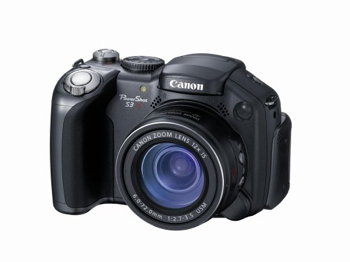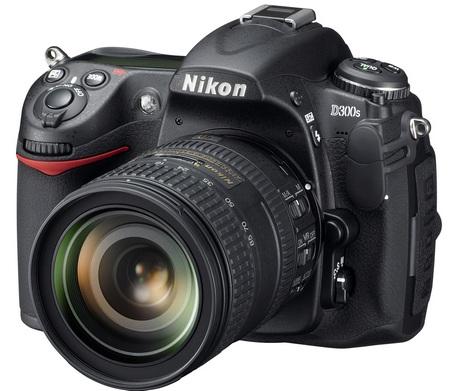DIGITAL CAMERA BUYING GUIDE: How to choose the Right Digital Camera?
Body
You want to buy a new DIGITAL CAMERA to capture your beautiful and precious moments and totally confused between the options available in the market , be it mirrorless camera or DSLR that uses interchangeable lenses for maximum image quality?
Check out the camera buying guide to help you decide what RIGHT DIGITAL CAMERA to buy for your needs :
TYPES OF DIGITAL CAMERAS :
- POINT AND SHOOT CAMERA :
Point and Shoot Camera are simple cameras that easily fit in your pockets and are mostly used by amateur photographers. They don’t feature detachable lenses or 20+ megapixel photos, but they are durable and they shoot decent photos to share it with your friends or social media .
Pros: They are fully automated , extremely portable and easily come in your budget as well.
Cons: Image quality is although better than a smartphone camera but it does not give great images in low light.
Main Features: Portability, automated functions to click photos, optical zoom lens, built-in image stabilization to get blur-free images.
Accessories: The camera bag consists of SD Memory cards, AA batteries (for some models) and a protective case.
Best Picks: Some popular models of point and shoot cameras are NIKON Coolpix L28, CANON IXUS 255 HS, SONY Cybershot DSC W810, SONY Cybershot DSC W830, CANON POWERSHOT A2500 , OLYMPUS SZ-16 etc. - MIRRORLESS CAMERA :
Mirrorless cameras are basically for non-professionals who want excellent image quality. They have large image sensors to capture more light per pixel, which in turn improves the contrast, colors and overall picture quality. Having high mega-pixel count also ensures sharp and crispier images. They come with interchangeable lenses and are much smaller and lighter than DSLR as they exclude the mirror found in DSLR cameras.
Pros: Large sensors which delivers better image quality , light in weight and small body.
Cons: Limited lens options; they have slower performance as compared with DSLRs particularly autofocus ; they are also expensive.
Main Features: Mirrorless cameras have small interchangeable lenses; small camera body and are portable; they have larger sensor than point-and-shoot and bridge cameras ensuring better image quality.
Accessories: It comprises of protective case, batteries, external flash, electronic view-finder.
Best Picks: Some popular brands of point and shoot cameras are CANON,NIKON , SONY, OLYMPUS , KODAK, FUJIFILM etc. - BRIDGE CAMERAS :
Bridge cameras (Superzoom Cameras) are so called because they are intermediate between a basic compact camera and a complicated DSLR and share the features of both. Their appearance is similar to that of a DSLR camera but do not have interchangable lenses. They have built-in superzoom lenses with huge optical zoom range upto 50x magnification, thus ensuring high resolution and best image quality. They can easily shoot between wide-angle and telephoto, close-up shots without having the botheration of changing lenses again and again.
Pros: Superzoom lenses ensures great close-up pictures and can also click far away objects with ease. Some bridge cameras also offer tilted and vari-angle LCD screens to be able to click photos at different angles.
Cons: They have small image sensors as in point and shoot cameras which affects the picture quality in low light. Images produced by fixed, built-in lenses is not as sharp as we get from detachable lenses in DSLRs.
Main Features:- Electronic view finder: Superzoom bridge cameras use electronic viewfinders (EVF) unlike the optical view finder which is found in DSLRs or compact cameras.
- Resolution: They have high resolution ranging from 12Mp to 18Mp.
- Image stabilisation technology: they come with image stabilisation technology in lenses to get blur-free images. However, they do not ensure clear images at extreme zoom levels.
- Portability: They do not fit easily in pocket like compact cameras but are lighter and smaller than DSLR cameras.
- They have built-in superzoom lenses and tilt-out LCD screen for wider-angle support.
- Burst shooting mode: They can capture continuous images while the shutter button is held down.
- Advanced manual controls: We can adjust exposure, shutter speed, ISO and various other settings manually as in DSLR.
- Wide-angle support: They have superzoom lenses which have broader focal length to capture more scene into the pictures, ideal for clicking landscapes or group photos.
Accessories: The camera kit comprises of hand strap, external stereo microphone for video, external flash, protective case.
Best Picks: Some popular brands of point and shoot cameras are CANON,NIKON , SONY, OLYMPUS , KODAK, FUJIFILM etc. - DSLRs (Digital Single Lens Reflex) CAMERAS :
DSLR is a digital camera which combines the optical features and mechanisms of Single-lens reflex camera (SLRs) with a digital imaging sensor to get very high quality images, often used by professional photographers.
Pros: Fast shooting (faster ISO leads to faster shutter speeds) ; interchangable lenses which provides multiple shooting options- ranging from close-ups to wide-angles ; DSLRs use larger image sensors hence giving sharper and crispier images , even in low light conditions.
Cons: They are bigger and heavier than point and shoot cameras ; their operation is also slightly complicated ; price range is also high in case you want to opt for high quality lenses.
Main Features:- They offer both options- fully automated or fully manual controls.
- They have detachable lens options to get clearer pictures of far way images.
- Burst mode: They have burst shooting modes to shoot multiple images continously in a single burst which is good for sports as well as action photography.
- Max shutter speed : Some DSLRs have impressive shutter speeds which is quite useful to click pictures in sports or action photography.
- ISO ratings: DSLRs have good ISO settings to ensure good picture quality even in dark conditions.
- Image stabilisation technology: they have anti-shake or image stabilisation technology in lenses to get blur-free images.
- They come with optical view finder which lets you frame subject and click photos even in bright light.
- Dust protection: They have dust cover filter just behind the lens so that the dust does not enter the lens chamber.
Accessories: It comprises of batteries, camera bag, memory card, lenses, filters and warranty card.
Best Picks: Canon EOS 60D, Canon EOS 70D SLR, Nikon D5100, Nikon D3300, Nikon D7100 DSLR camera.


IMPORTANT DIGITAL CAMERA SPECIFICATIONS TO BE CONSIDERED WHILE BUYING IT :
- Megapixels/Resolution : The amount of megapixels that a camera possesses determines that how much detailed picture a camera's sensor can capture when it is exposed to light. A single mega-pixel amounts to exactly one million pixels in an image. The more mega-pixels you have, the more visual noise is introduced into your image in case the sensor is small as in point and shoot cameras. Hence while consider buying the camera, the amount of mega-pixels should the last thing to be thought of. Even 8 MP or above is also considered fine.
- Image Stabilization : Image stabilization or anti-shake technology is very important to get blur-free , sharper and crispier images.
They are two types of Image stabilization- optical and digital image stabilization. Optical image stabilization helps to take sharper images even in low light. - Quality of lens : Lens are the most important part of camera and can actually improve the picture quality. Whether we are using compact cameras with fixed lens or interchangable lens camera system, the good quality lens ensures sharper images and great pictures even in low light or fast moving photographic action. Go for lens with fast apertures.
- Focal Length : Focal length is basically defined as the distance between the lens and real image of the object. Higher the focal length, greater is the magnification of the image. It is measured in mm and higher the number means the bigger zoom (i.e, how close the object appears) and lower number means lesser zoom and can be used for wider shots. Prime lenses have fixed focal length such as 35mm or 50mm.
- Aperture : Maximum aperture is the maximum amount of light which the lens can gather. Lenses with larger maximum apertures (which are expressed with a lower number such as f/2.8 or f/1.8) can collect more light and easily click good , brighter and sharper photos in low light and dark conditions as well. In advanced cameras nowadays, we can manually set the aperture to control the amount of light reaching the image sensor.
- Type and size of Sensor : The size of the sensor in camera determines how much light it uses to create a picture. Bigger sensors can gather more information than smaller ones and produce better images. Smartphones have smallest sensors whereas DSLRs and mirrorless cameras have larger sensors than compact and bridge cameras.
- Shutter speed : Shutter speed refers to the amount of time a shutter can remain open in a camera. Faster the shutter speed, more clearly we can capture the moving object. Shutter speed settings are measured in tenths or hundredths of a second. Cameras having faster shutter speeds are better for sports photography or car racing ,and can shoot at 1/500 of second.

